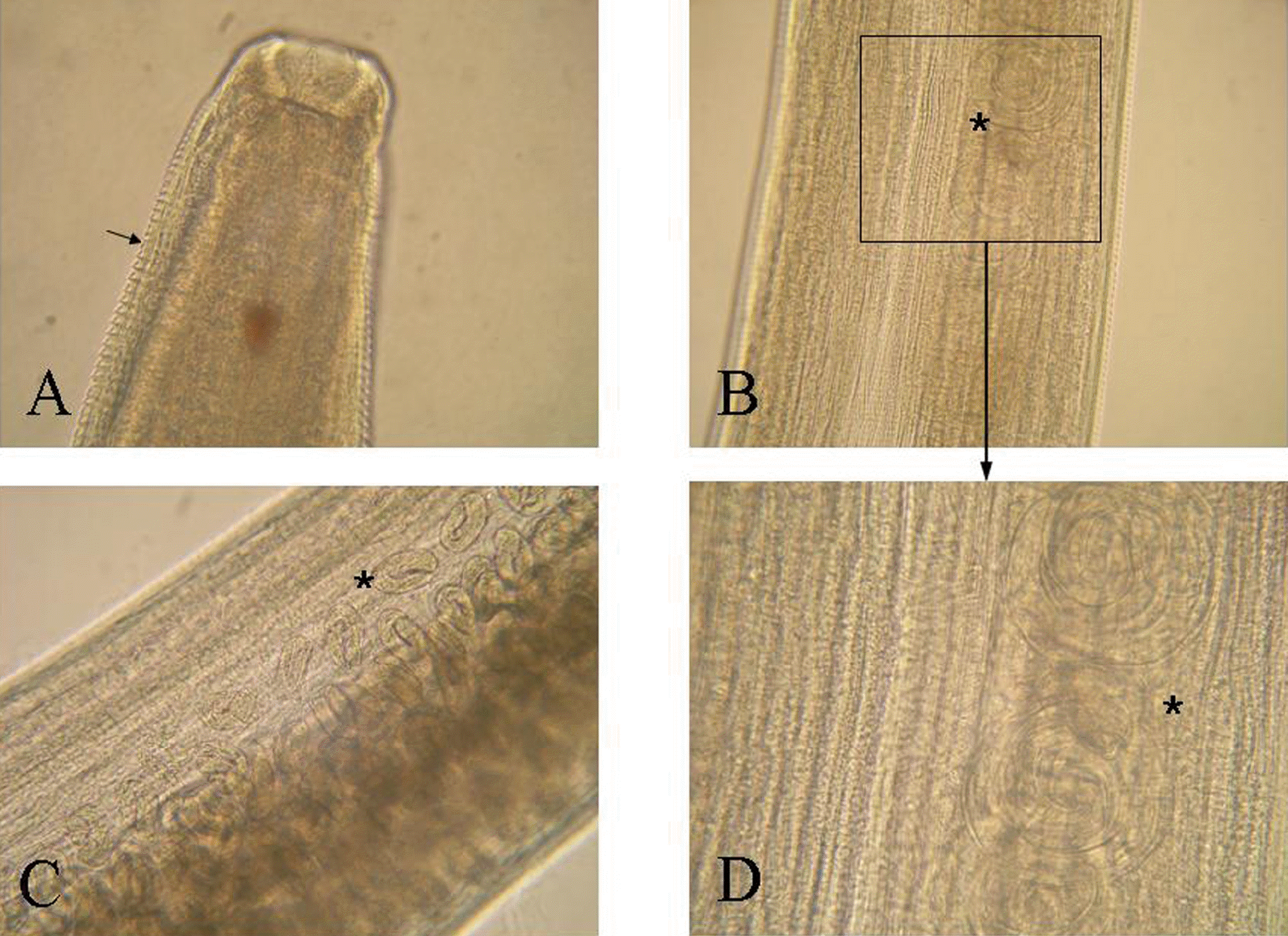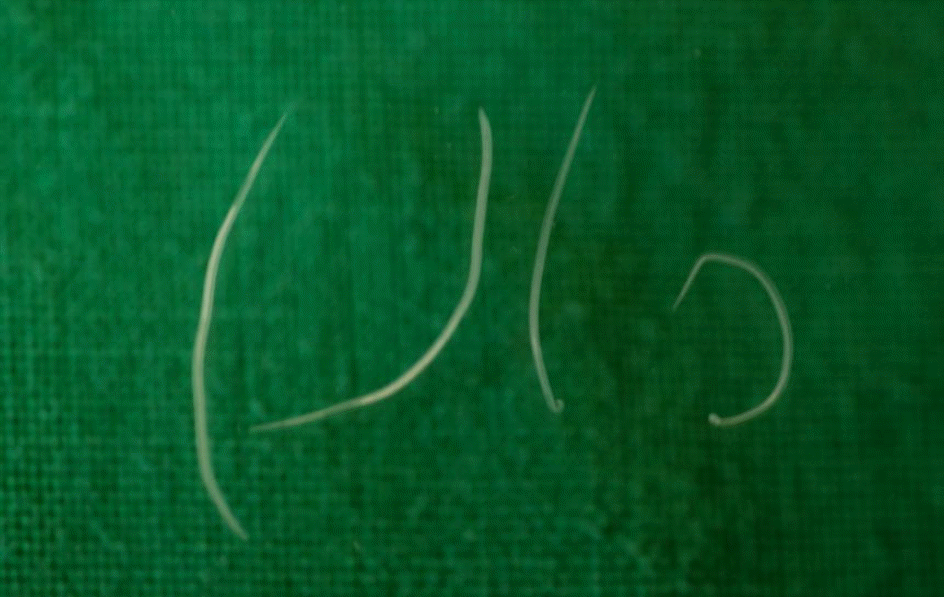Abstract
Purpose
To report a relapsed case of an intra-conjunctival Thelazia callipaeda infestation within one month.
Case summary
A 59-year-old female patient presented with symptoms of itching and a sense of foreign substance in her left eye, which she had been experiencing for several days. Conjunctival hyperemia and follicle multiplication along with ten actively moving worms were identified and were extracted with forceps. The symptoms disappeared until 25 days later, when they recurred and five additional worms were extracted. All of the extracted worms were confirmed to be Thelazia callipaeda and the patient’s symptoms disappeared after the final extraction.
References
1. Oh CK, Youn WS, Cho SY, et al. A case report of human thelaziasis. J Korean Ophthalmol Soc. 1975; 16:431–4.
2. Railliet A, Henry A. Nouvelles observations sur les Thelazies, nematodes parasites de l’oeil. Compt rend soc Boil. 1913; 68:783–5.
4. Nakata R. Example of the parasite Thelazia callipaeda in human in Korea. J Chosen Med Assoc. 1934; 24:939–44.
5. Burnett HS, Parmelee WE, Lee RD, Wagner ED. Observation on the life cycle of Thelazia californiensis. J Parasitol. 1957; 43:433–8.
6. Choi WY, Youn JH, Nam HW, et al. Scanning electron microscopic observations of Thelazia callipaeda from human. Korean J parasitol. 1989; 27:217–23.

7. Nakata R. Study on Thelazia callipaeda. Jpn J Parasitol. 1964; 13:600–9.
8. Hong ST, Lee SH, Shim YB, et al. A Human case of thelaziasis in Korea. Korean J parasitol. 1981; 19:76–80.

11. Kim YK, Song BR, Yoo JH, et al. Two cases of human thelaziasis. J Korean Ophthalmol Soc. 1994; 35:95–100.
12. Lee CH, Kim SY, Kim DC, Choi TY. 5 cases of human thelaziasis. J Korean Ophthalmol Soc. 1998; 39:2827–31.
13. Choi DK, Cho SY. A case of human Thelaziasis concomitantly found with a reservoir host. J Korean Ophthalmol Soc. 1978; 19:125–9.
14. Lee SW, Kang SW, Lee JO, Kee SE. Two cases of thelazia callipaeda infestation. J Korean Ophthalmol Soc. 1994; 35:1132–6.
15. Lee BS, Jung HR, Eom KS, et al. A case of human thelaziasis in Korea. J Korean Ophthalmol Soc. 1986; 27:85–9.
16. Kim DC, Shin H. Two cases of human thelaziasis. J Korean Ophthalmol Soc. 1990; 31:105–9.
Fig. 2.
Photographs of the collected Thelazia callipaeda from patient’s eye. (microscopic apperance) Note the trans-verse cuticular striation (arrow in A, ×100). Also, numerous ovum (asterisk in C, x100) in lower part of the worm and embryonated larvae in the uterus (asterisk in B, ×100; D, ×200) were observed.





 PDF
PDF ePub
ePub Citation
Citation Print
Print



 XML Download
XML Download